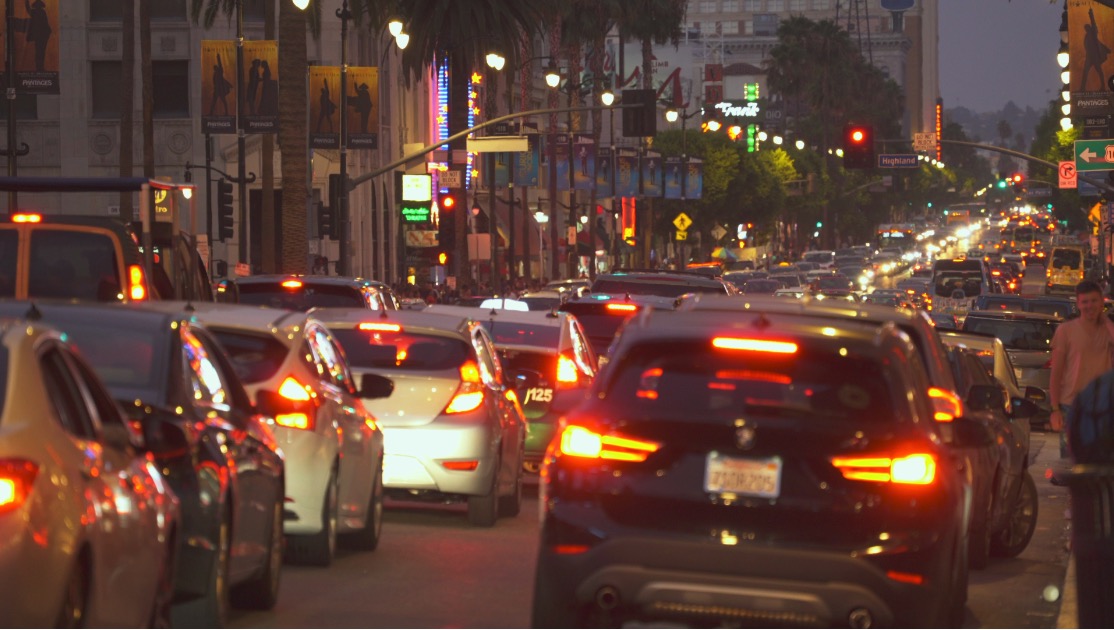Comments
PLANNING WATCH - Is traffic still getting worse in Los Angele, despite population decline, the construction of a new mass transit system, and the incremental build out of a bicycle lane network? The answer is yes, and if we look at the underlying causes, it is easy to understand why.
Job opportunities. If you own a car in Los Angeles, the number of jobs open to you is dramatically larger than if you are bus-dependent. This is the main major reason why transit ridership has declined in recent years, while traffic conditions got worse. Low income Angelenos have switched from buses to cars for employment reasons.
LA’s mass transit system, such as the D/Purple Line on Wilshire Boulevard, originating in the downtown and terminating at the Brentwood VA hospital, is nearing completion. This is the good news. The bad news is that essential first-last mile improvements, such as parking lots and bicycle sharing stations, are only planned. But neither METRO or LA's City Hall have ponied up implementation funds. Where I live, in the Miracle Mile, the D/Purple Line’s first-last mile plan has been side-lined, sitting on a shelf since 2021.
Auto-oriented apartments: The City’s many land use decisions, the bread-and-butter of city planning in Los Angeles, have approved many auto-centric apartment buildings, nearly all made possible through zoning waivers. These high-rise buildings have appeared throughout the Los Angeles region, especially in the Downtown Los Angeles (DTLA) , MacArthur Park, Koreatown, Miracle Mile, Hollywood, Valley Village, and Warner Center neighborhoods. They cater to the well off, the least likely demographic group to take buses and subways. Furthermore, as the LA region’s population declines, it becomes more economically unequal, with the small percentage of auto-oriented high-income residents increasing. They opt for cars, even when mass transit is nearby. Proximity to transit in new, expensive apartments is the principal justification offered by Council Offices and by City Planning for lucrative zoning waivers, even though affluent tenants rarely take buses or subways.

Traffic jam in Hollywood, a Los Angeles neighborhood with many new, expensive high rise apartments.
McMansions: Another land use that contributes to traffic congestion are the 40,000 single-family homes and duplexes that contractors demolished since 2000, building McMansions in their place. The garages are now in the front of the house, instead at the rear of the lot. While the number of occupants remains the same, the McMansions invariably now have two or three luxury cars parked on miniscule front driveways. These cars are instantly available for residents to drive off into traffic jams.
Bicycle lanes: The Los Angeles area has remarkable weather, allowing biking throughout the entire year. And, people in the LA area like to bike. CicLAvia bicycle events regularly attract 100,000 riders because their temporary routes are car-free and, therefore, safe. The rest of the time bicyclists tempt fate because LA’s bicycle lanes are seldom protected. This forces bicyclists to mix-in with cars, trucks, and busses, which is why they mostly choose cars for mobility.
Sidewalks: Los Angeles has 11,000 miles of sidewalks, but they have two features that discourage walking. First, much of the city’s sidewalk system is broken and uneven. The City’s 25-year plan to repair these sidewalks has also been hampered by successful lawsuits because the sidewalk repair plan destroys many existing street trees.
The second feature that discourages walking is LA’s shrinking tree canopy. Construction and climate change are taking a tremendous toll. Instead of expanding, so pedestrians will have more shade from the sun, boulevard trees are disappearing. This lack of shade is another disincentive to walking to nearby destinations, instead of driving.
Each cause for increased traffic congestion can be eliminated, but this requires strong City Hall leadership. So far that leadership is missing, and until Angelenos force it to appear, traffic will continue to get worse.
(Dick Platkin is a retired Los Angeles city planner who reports on local planning issues for CityWatchLA. He is a board member of United Neighborhoods for Los Angeles (UN4LA). Previous columns are available at the CityWatchLA archives. Please send questions to [email protected].)
















